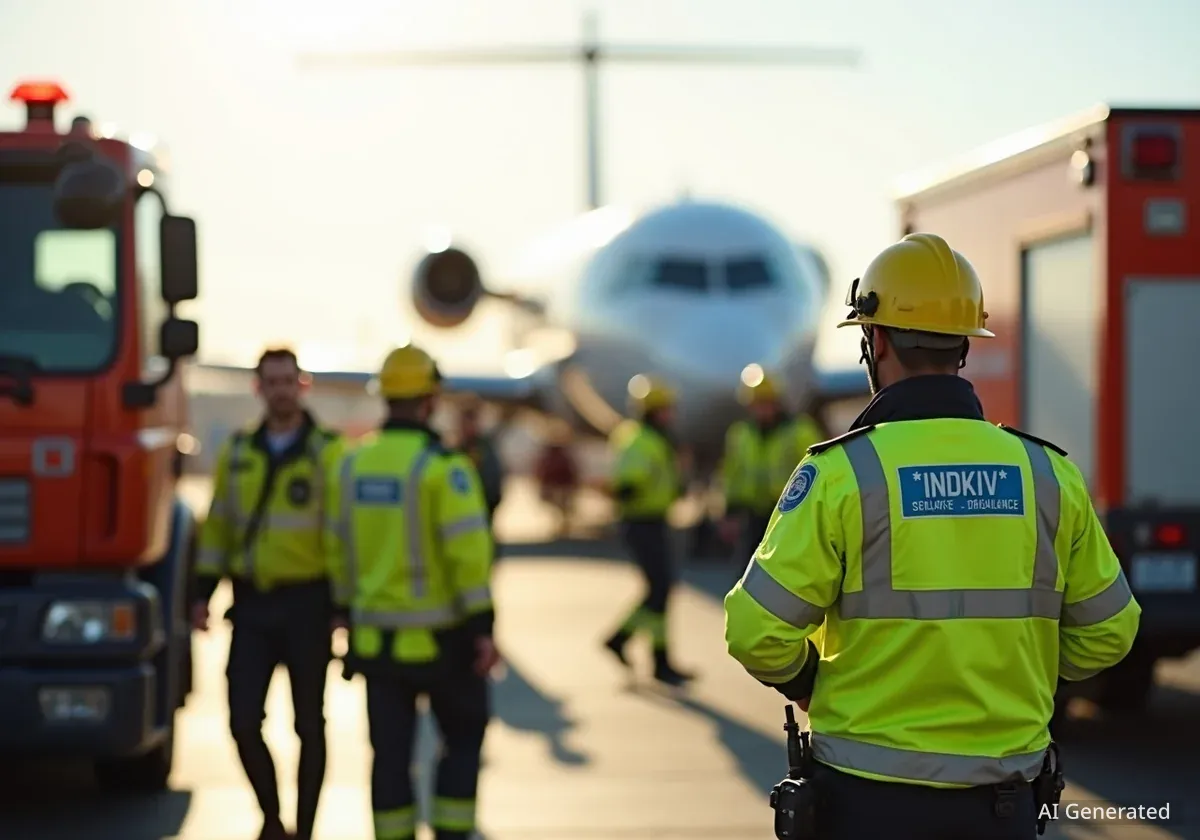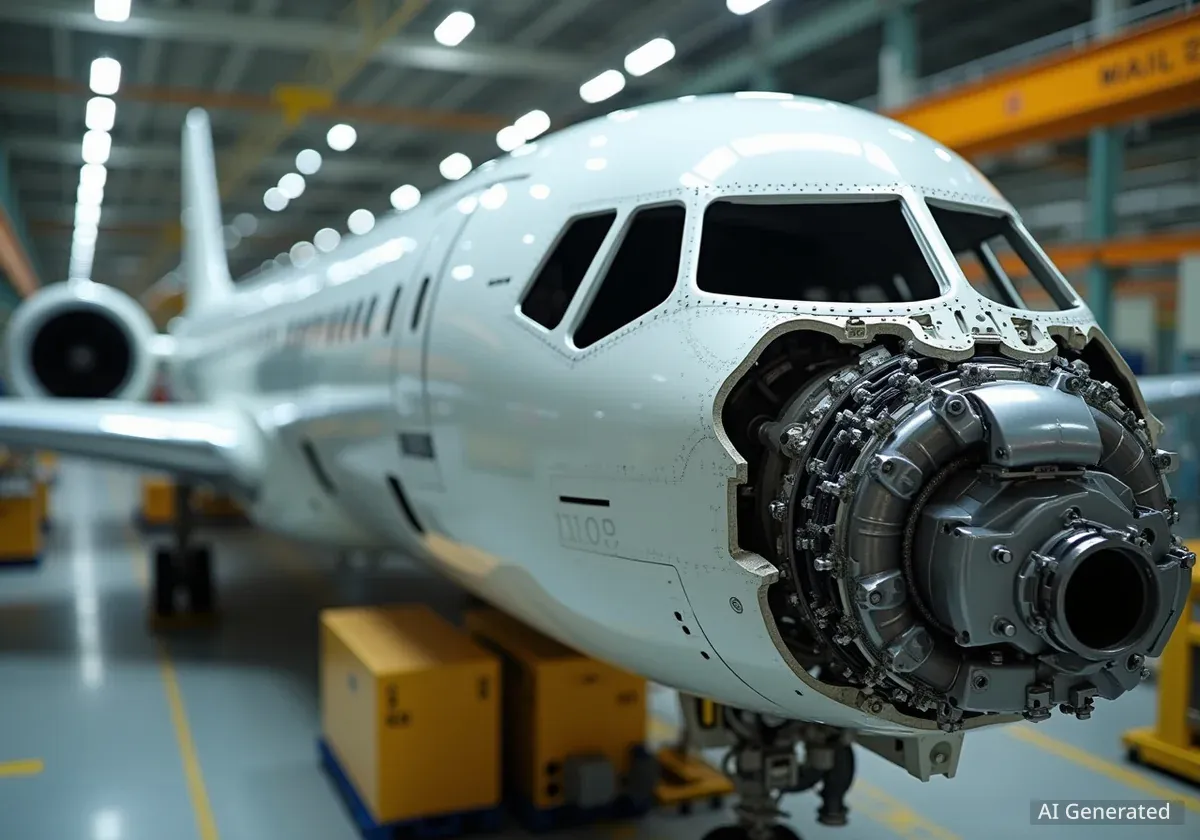Delta Air Lines has become the world's largest operator of the Boeing 757 aircraft. This status results from the airline's long-term commitment to the aircraft type, its strategic mergers, and a decision to extend the operational life of these jets. While other airlines have retired their 757 fleets, Delta has continued to invest in and utilize these aircraft across its network.
Key Takeaways
- Delta operates 122 Boeing 757s, making it the world's largest operator.
- The merger with Northwest Airlines significantly expanded Delta's 757 fleet.
- The 757's versatility allows it to serve both domestic and international routes.
- Delta continues to invest in maintenance and upgrades for its aging 757 fleet.
- New Airbus A321neos will gradually replace some 757s, but the 757-300 remains unique.
Delta's Deep Roots with the Boeing 757
Delta Air Lines' connection with the Boeing 757 began in 1984. At that time, Delta was one of the first United States carriers to add the aircraft to its fleet. The 757 was designed to be an efficient, mid-sized jet with transcontinental range. It was a modern replacement for older Boeing 727s, offering better performance and lower fuel consumption.
Over the next two decades, Delta steadily increased its 757 fleet. The airline used these jets for a wide range of flights. This included busy domestic routes and some international services across the Atlantic. This early and consistent adoption laid the groundwork for its current position.
Quick Fact
Boeing ended production of the 757 in 2004. By then, Delta already had one of the largest active 757 fleets globally.
The biggest increase in Delta's 757 fleet size came in 2010. This was when Delta merged with Northwest Airlines. Northwest operated a significant number of Boeing 757-300s, which are the stretched version of the aircraft. These planes were integrated into Delta's operations. This merger cemented Delta's role as the world's leading 757 operator.
Fleet Size and Competitive Landscape
As of 2024, Delta Air Lines operates 122 Boeing 757 aircraft. This total includes 106 Boeing 757-200s and 16 Boeing 757-300s. This number is nearly twice the size of its closest competitor, United Airlines. United is the only other major US carrier that still flies the 757 on a large scale.
United Airlines operates about 60 757 aircraft. Its fleet includes 39 757-200s and 21 757-300s. Beyond these two airlines, the number of other significant 757 operators drops sharply. Icelandair has a smaller fleet of 12, and Germany's Condor Airlines operates only nine 757-300s, mainly for leisure travel.
Industry Context
Many airlines retired their 757s in favor of newer aircraft like the Airbus A321 or Boeing 737 variants. Delta, however, chose a different path. It invested in maintaining and upgrading its existing 757 fleet.
Delta's strategy involved significant investments. These included overhauls, cabin refurbishments, and avionics upgrades. These efforts kept the aircraft economically viable well into the 2020s. This commitment highlights Delta's focus on fleet longevity and diversity.
The following table shows a comparison of active 757 fleets among major operators:
- Delta Air Lines: 106 (757-200), 16 (757-300), Total: 122
- United Airlines: 39 (757-200), 21 (757-300), Total: 60
- Icelandair: 11 (757-200), 1 (757-300), Total: 12
- Condor Airlines: 0 (757-200), 9 (757-300), Total: 9
Delta's 757-200s serve high-demand business and transatlantic routes. The larger 757-300s are used for busy domestic routes, such as Atlanta to Las Vegas or Detroit to Orlando. This flexibility to use the same aircraft family for both premium international and high-volume domestic flights is a key advantage for Delta.
Why Delta Continues to Value the Boeing 757
The Boeing 757 remains a vital part of Delta's fleet because of its unique capabilities. The aircraft's combination of range, power, and capacity allows it to perform well on routes that push other narrowbody jets to their limits. This includes transcontinental flights and medium-haul international services.
The 757's range and thrust enable it to fly long distances. For example, it operates the only direct European connections on this aircraft type from Detroit and Minneapolis to Reykjavik, Iceland. It also serves important US transcontinental markets. Delta pilots and fleet planners consistently praise the 757 for its versatility.
"There is simply no available narrowbody aircraft on the market that can seat what a 757-300 does in a multi-class configuration."
Delta's operations team notes that the 757 is especially valuable for routes where payload, runway performance, or range are critical factors. These routes might challenge newer, smaller narrowbody aircraft. Examples include flights from Minneapolis to certain European cities or long domestic flights like Seattle to Boston, where the 757's efficiency and speed are ideal.
Here are some examples of routes where Delta uses the Boeing 757:
- Detroit (DTW)/Minneapolis (MSP) – Keflavik (KEF): 757-200, approximately 160 passengers, Transatlantic medium-haul
- Atlanta (ATL) – Bogotá (BOG): 757-300, approximately 230 passengers, International niche route
- Seattle (SEA) – Boston (BOS): 757-200, approximately 170 passengers, Domestic transcontinental
The continued relevance of the 757 allows Delta to match aircraft capacity to route demand effectively. This avoids using larger, less efficient widebody aircraft unnecessarily. It also helps Delta maintain flight frequency on less busy routes and operate efficiently at airports with shorter runways or strict slot restrictions. The 757 fills operational gaps that no modern aircraft fully replicates, making it a strategic asset for Delta's network planning.
Mergers and Fleet Strategy: A Defining Factor
The 2010 merger between Delta and Northwest Airlines was a turning point. Before this merger, Delta already had a large fleet of 757-200s, using them for various routes from coast-to-coast US flights to thinner transatlantic services. However, Northwest brought a crucial addition: the Boeing 757-300.
The 757-300 is a stretched version with 243 seats. It provided a unique balance of capacity and efficiency. Northwest was one of only a few airlines that operated the -300 variant. This aircraft was well-suited for its high-density routes across the Midwest and West Coast, where passenger demand was strong but widebody aircraft were not economically practical.
Key Merger Impact
The integration of Northwest's 757-300s gave Delta a uniquely versatile 757 fleet, enhancing its ability to tailor aircraft to specific route demands.
When Delta integrated Northwest's fleet, it gained not only the aircraft but also valuable operational experience with the 757-300. This merger resulted in a highly flexible 757 portfolio for Delta. The airline could then choose the right aircraft for each route: the smaller 757-200s for transatlantic or medium-haul business routes, and the larger 757-300s for busy leisure markets like Orlando, Los Angeles, or Honolulu.
This flexibility is a core part of Delta's fleet strategy. It allows the airline to match the right aircraft to the right market, avoiding a one-size-fits-all approach. The merger also reinforced Delta's long-standing philosophy of optimizing aircraft lifecycles. By keeping well-maintained aircraft in service as long as they are economical, Delta expanded its transcontinental and Hawaii networks without needing large capital expenditures for new planes.
Challenges of Operating an Older 757 Fleet
Operating an aging aircraft fleet presents several challenges. Most of Delta's 757s are over 25 years old, with some exceeding 30 years. This leads to higher maintenance costs and more frequent airframe inspections. Finding replacement parts can also become more difficult and time-consuming.
Fuel efficiency is another concern. The 757's older engines are not as efficient as modern engines found in newer aircraft like the A321neo. However, Delta addresses this by assigning 757s to routes where performance and capacity are more important than fuel economy alone.
Here is a summary of challenges and Delta's mitigation strategies:
- Challenge: Aging airframes. Impact: Higher maintenance and downtime. Delta's Mitigation: Strong internal maintenance (TechOps MRO support) and heavy inspection checks.
- Challenge: Fuel inefficiency. Impact: Higher cost per seat-mile. Delta's Mitigation: Targeted route planning where performance outweighs fuel cost.
- Challenge: Parts scarcity. Impact: Longer turnaround times for repairs. Delta's Mitigation: Maintaining an in-house parts inventory and careful management of existing components.
- Challenge: No direct replacement. Impact: Risk of fleet imbalance. Delta's Mitigation: Gradual integration of new Airbus A321neos.
Despite these challenges, Delta's robust maintenance division, Delta TechOps, allows the airline to keep older aircraft flying reliably for longer than many competitors. This in-house capability is a significant advantage.
The Future of Delta's Boeing 757 Fleet
Delta's fleet modernization is ongoing. The airline has 155 Airbus A321neos on order, with deliveries scheduled through 2027. These new aircraft will gradually replace older 757-200s on domestic and shorter transatlantic routes. The A321neo offers improved fuel efficiency and modern amenities.
However, the 757-300 remains a unique aircraft that is harder to replace. No current narrowbody aircraft matches its specific combination of capacity and range. For this reason, Delta is expected to keep its 757-300s in service for a longer period, potentially into the 2030s. The focus for replacements will be on the smaller 757-200 models first.
Long-Term Strategy
Delta's continued use of the 757 reflects its broader strategy: investing in internal maintenance, managing costs, and maximizing the value of each aircraft asset. This approach ensures the iconic jet continues to be a productive part of its fleet.
As other airlines retire their 757s, Delta's expertise and commitment ensure that this aircraft continues to play a significant role. The 757's enduring service life is a testament to Delta's strategic fleet management and its ability to adapt an older aircraft type to modern operational needs.





